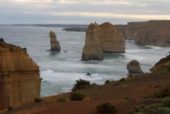Venezuela crisis: Aid lorries stuck in Colombia border city
Published on: February 8, 2019

The first lorries with US humanitarian aid for Venezuela have arrived in the Colombian border city of Cúcuta.
The vehicles are currently parked near the Tienditas bridge, which remains blocked by Venezuelan troops.
President Nicolás Maduro, who has the support of the army, has rejected letting it into the country.
Opposition leader Juan Guaidó, who has declared himself interim president, has warned many Venezuelans are in danger of dying without international aid.
Mr Guaidó is head of Venezuela’s National Assembly and says the constitution allows him to assume power temporarily when the president is deemed illegitimate.
He has secured the backing of over 40 countries, including the US and most Latin American and European nations. Mr Maduro still has the support of China and Russia.
In other developments:
- The US announced new sanctions on members of the Maduro administration, saying visas for members of the government-controlled Constituent Assembly would be revoked
- European and Latin American members of the so-called International Contact Group said it was crucial to restore full democracy in Venezuela, saying they would push for new elections as soon as possible
What’s the latest on the US humanitarian aid?
On Thursday, several lorries with food and medicine arrived at a collection centre in Cúcuta.
The vehicles were escorted by Colombian police motorcycles.
It was not immediately clear how the humanitarian aid would be delivered across the border.
The Venezuelan military had earlier placed cargo containers and a tanker lorry across the Tienditas bridge, which connects Cúcuta and the city of Ureña in Venezuela.
Mr Maduro has refused foreign aid supplies, saying they would open the way for US military intervention to oust him.
He said that “no-one will enter, not one invading soldier”.
Meanwhile, US Secretary of State Mike Pompeo is demanding that Venezuela re-open the bridge, saying “the Maduro regime must let the aid reach the starving people”.
A number of Venezuelan leaders have also appealed to the military to allow the aid lorries to cross into the country.
How could the aid scheme work?
Mr Guaidó does not control any territory in Venezuela so, instead, he is planning to set up collection centres in neighbouring countries to which Venezuelans have fled.
He said he wanted to set up an international coalition to gather aid at three points, and press Venezuela’s army to let it into the country.
In a tweet last Sunday, US National Security Adviser John Bolton said plans were being advanced.
Meanwhile, US President Donald Trump said in an interview the use of military force remained “an option”.
In his Tuesday State of the Union speech, he reiterated his support for Mr Guaidó, saying: “We stand with the Venezuelan people in their noble quest for freedom.”
What’s the background to the crisis?
Venezuela has suffered economic turmoil for years, with hyperinflation and shortages of essentials such as food and medicine. Millions have fled.
In January, Mr Maduro was sworn in for a second term following disputed elections which many opposition leaders did not contest because they were in jail or boycotting them.
Mr Guaidó, who is head of Venezuela’s National Assembly, declared himself president on 23 January.
He says the constitution allows him to assume power temporarily when the president is deemed illegitimate. On Saturday he said protests would continue until his supporters had achieved “freedom”.






